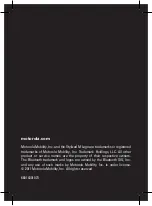
Repeat (Melodic Repeat) Group General Parameters
941
algorithms to shift the notes to musically correct ones,
even in pending repeated notes that haven’t yet
sounded.
Even when the Transpose setting is
0
, this can be used
to make the pending repeated notes conform to the
new chord, which is impossible with outboard
analog/digital delays. For example, if “Chord Shift” is
0: Off
and you strike a BMaj chord which will repeat 10
times, and then play a C Major chord before they have
all repeated, the still to be generated repeats will be
BMaj repeats overlapping CMaj repeats (dissonant).
With “Chord Shift” is
1: On
, the still to be generated
repeats will shift to the new chord and blend with the
new repeats.
Note:
A certain area of the keyboard may need to be
assigned as a Control Area for Chord Scan (in the
Dynamic MIDI) to produce the desired results.
0: Off
The transposed notes are repeated with no further
modification from this setting.
As the notes are repeated, notes which may be “atonal”
based on the analyzed chord (due to being transposed)
are shifted to tonal notes. Especially useful when
“Transpose” (discussed above) is set to something
other than
0
or multiples of
12
. The note tables used to
shift the notes have fewer passing tones than
2: Scalic2
(described below), and therefore may produce results
that are more pleasing.
2: Scalic2
Same as
1: Scalic
(above), except that the note tables
used to shift the notes have more passing tones for
each chord; therefore,
2: Scalic2
sounds more modal in
nature.
Stop Mode
[0…3]
Allows pending repeated notes which haven’t
sounded yet to be discarded (stopped) by various
actions, such as playing the keyboard.
0: Off
Playing new chords or notes do not affect pending
repeated notes - they will continue repeating as the
parameters specify. This allows previously started
repeats to overlap newly started repeats.
1: Any-Any Note
Playing any new chords or notes will cause all pending
repeated notes to be discarded, and only the new notes
will be repeated.
2: AKR-1st Note After Key Release
Playing any new notes while still sustaining at least
one note will not cause damping; all keys must first be
released, and then the next chord/note will discard
any pending repeated notes.
Note:
A MIDI Controller can also be assigned to
perform the stopping of repeats by using the “Repeat
Stop” Dynamic MIDI Destination (
☞
PG p.237). When a
Dynamic MIDI destination (7–7: Dynamic MIDI
“Destination”) is set to “Trigger Notes” or “Trigger
Notes & Envs,” Stop Mode also applies to whether the
repeats will be stopped when triggered by the
Dynamic MIDI action.
Rebound Mode
[0…2]
When using “Transpose” (
p.940) with repeated notes
and many repetitions, eventually the pitches of the
repeated notes may go beyond a certain range. This
can be an absolute overall range, or a small range
designed to track the hands around the keyboard. The
range and functioning of it is determined by the
settings of the “Range Mode” and “Range
Bottom/Top” parameters described below. When the
pitches of the repeated notes goes beyond this range,
the “Rebound Mode” setting determines whether the
repeats will end or continue in a modified fashion.
0: Off
When repeated notes go beyond the specified range,
they will cease to repeat, regardless of the number of
repetitions left.
1: Wrap
When repeated notes go beyond the specified range,
they will drop up or down an algorithmically
determined interval (depending on which end of the
range they exceed) and continue until the required
number of repetitions have been generated. This will
cause an up/down back-and-forth “cycling” effect at
the top or bottom of the range.
2: Rebound
When repeated notes go beyond the specified range,
they will reverse their direction (essentially by
inverting the current Transpose values) and continue
in the opposite direction until the required number of
repetitions have been generated. This will cause an
up/down back-and-forth “cycling” effect over the
entire range.
Tempo Env. Lock
[0, 1]
When a Tempo Envelope is being used (in the
Envelope Group), setting this to
1: Lock
causes the
repeated notes to lock their size to the Tempo
Envelope; i.e. as the Tempo Envelope speeds up the
times between them get smaller. Setting this to
0: Off
causes the size to remain relative to the KARMA
Tempo; even though the Tempo Envelope may be
speeding up or slowing down the effect, the repeat
times remain the same.
When a Tempo Envelope is
0: Off
or not in use, this
parameter has no effect.
0: Off
1: Any-Any Note
2: AKR-1st Note After Key Release
0: Off
1: Wrap
2: Rebound
0: Off
1: Lock
Содержание Electronic Keyboard
Страница 1: ...Parameter Guide Parameter Guide ...
Страница 2: ......
Страница 180: ...Program mode EXi 170 ...
Страница 290: ...EXi STR 1 Plucked String 280 ...
Страница 572: ...Sequencer mode 562 ...
Страница 700: ...Global mode 690 ...
Страница 751: ...Insert Effects IFX1 IFX12 Routing 741 Fig 2 3a Fig 2 3b ...
Страница 902: ...Effect Guide 892 ...
















































